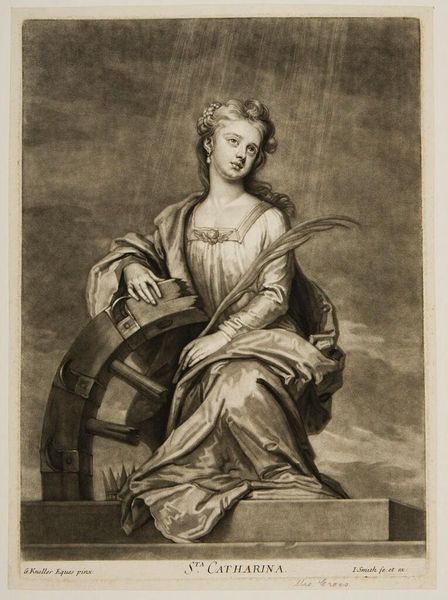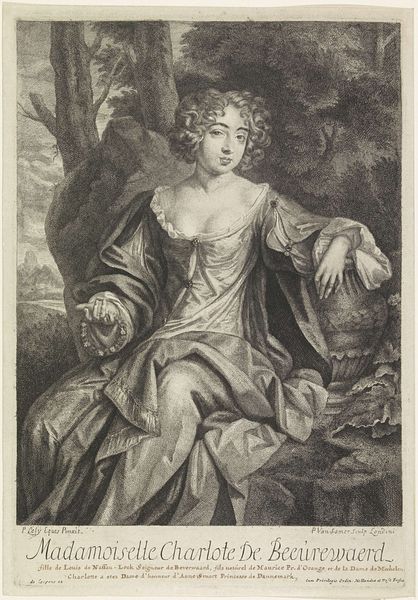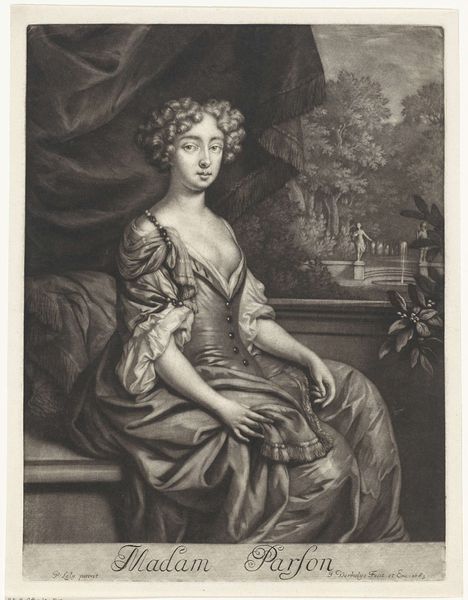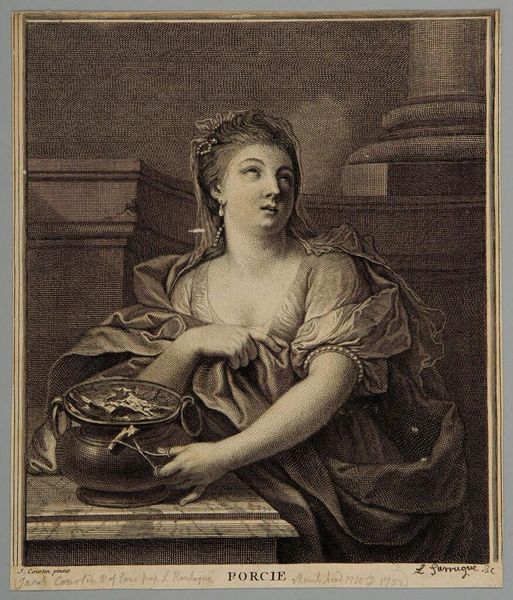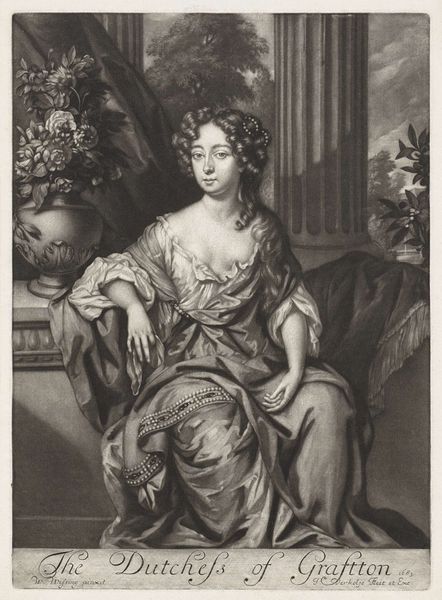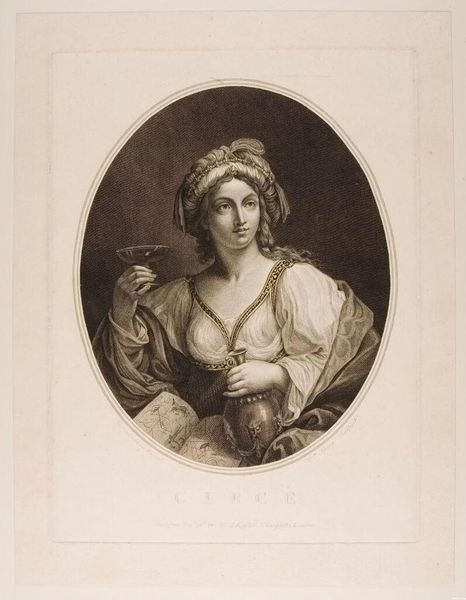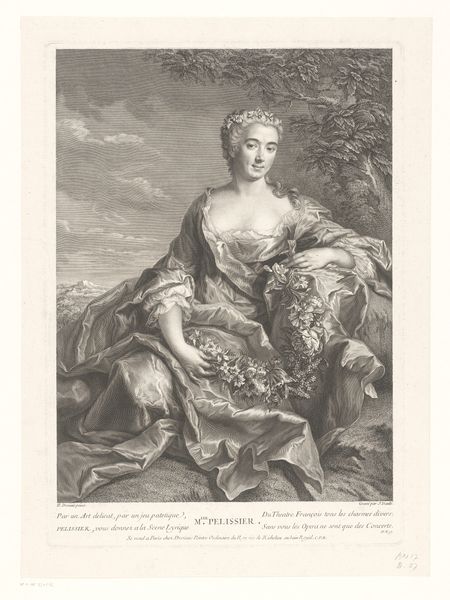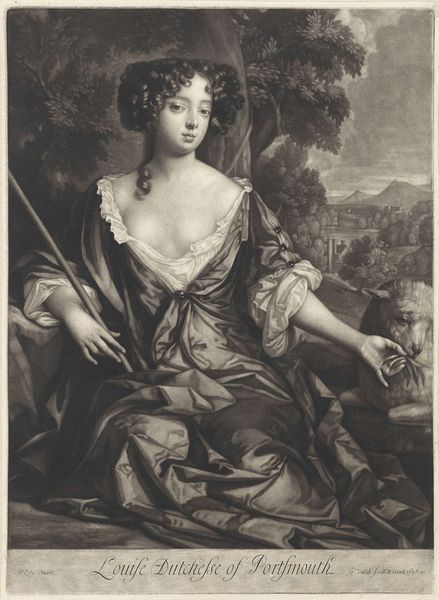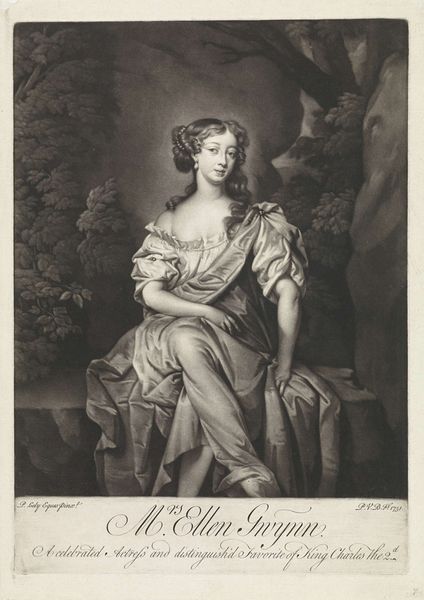
Copyright: CC0 1.0
Curator: Gerard Valck's portrait presents us with Nell Gwynn as a shepherdess, though the date of its creation is unknown. Editor: There’s an intriguing blend of innocence and something a bit more knowing in her expression, wouldn't you agree? And the lamb… it’s a bit cliché, isn’t it? Curator: The lamb wasn't so much of a cliché at that time, but it served to project innocence, but also wealth, as well as the pastoral ideal often associated with the aristocracy—a world Gwynn entered from the theater stage and Charles II's bed. It allowed her to assert her elevated status. Editor: So, the lamb isn’t just about sweetness; it’s a claim to legitimacy, almost? Interesting how animal symbolism works. Curator: Precisely. And if you look closely at the text in the lower register, it speaks to the idea that no art can show her wit. The portrait becomes a play on class, reputation, and visual language. Editor: It is a clever portrait. The lamb, the costume, the landscape are all part of her carefully constructed persona. Curator: Indeed. It offers us so many layers to unravel about the perception and performance of identity in that era.
Comments
No comments
Be the first to comment and join the conversation on the ultimate creative platform.
